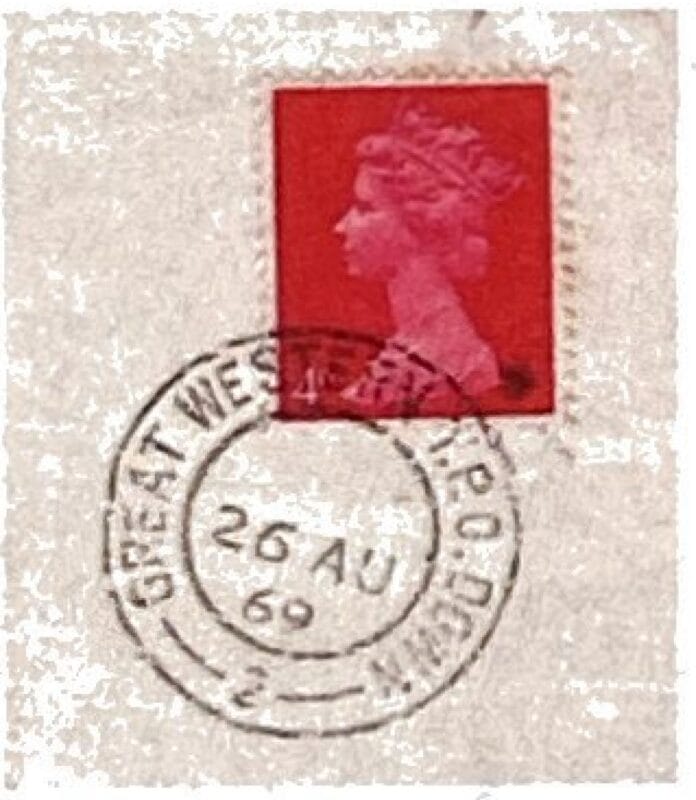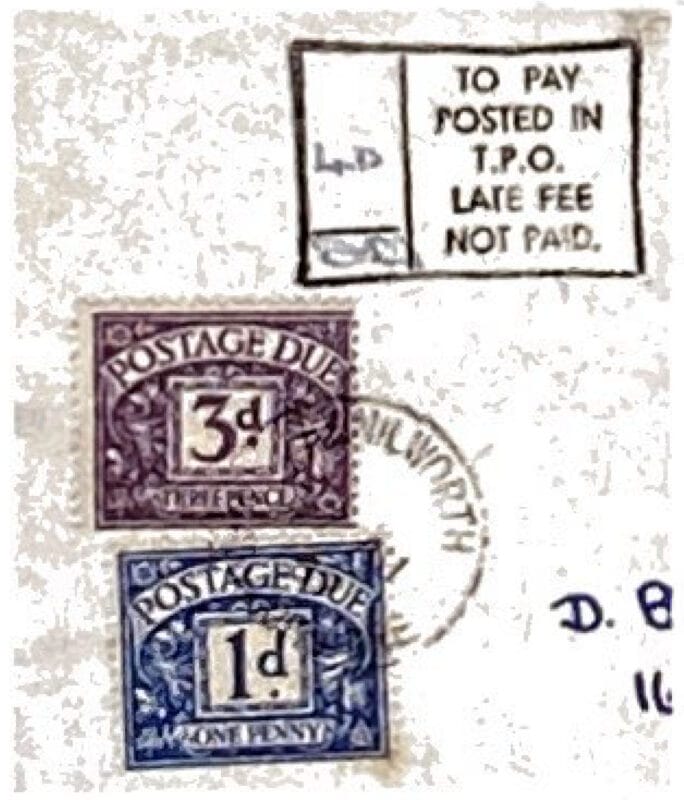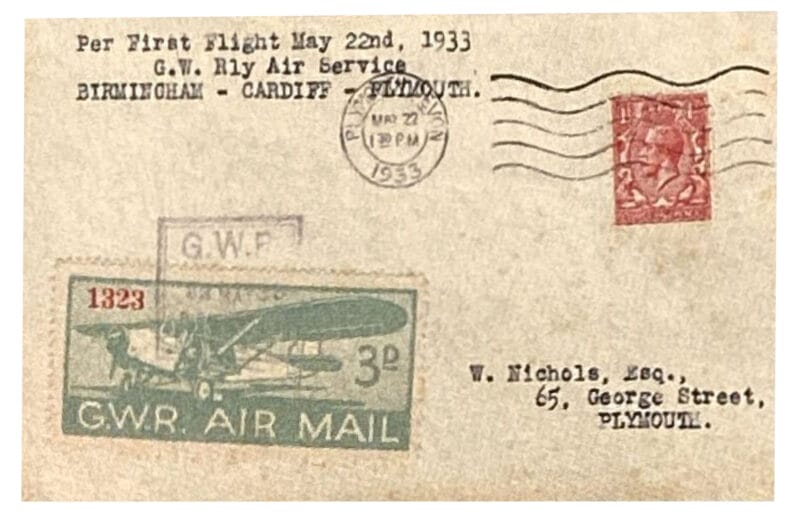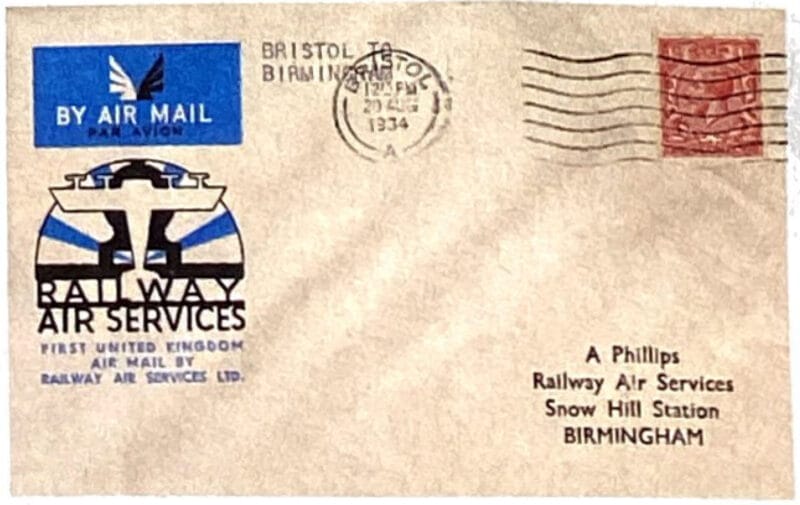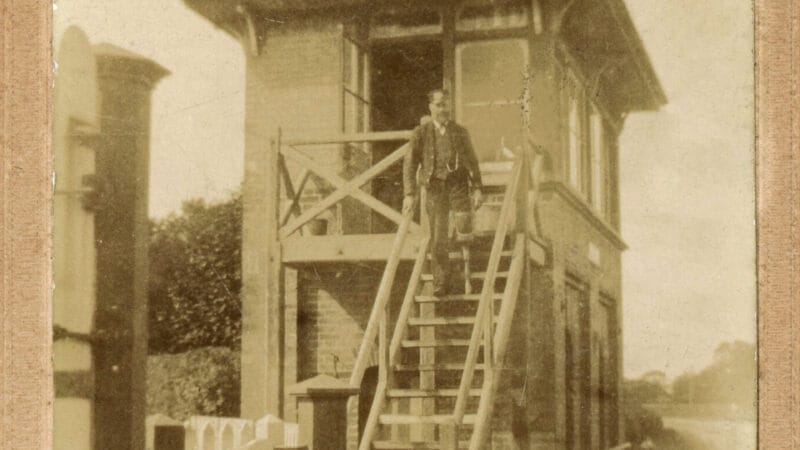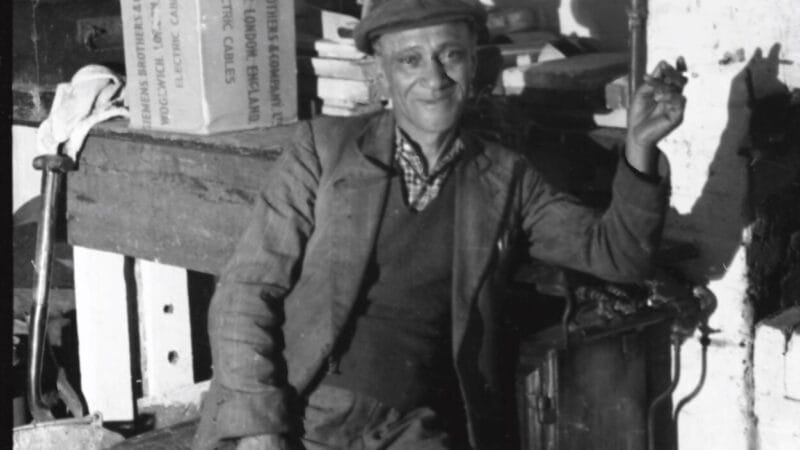Terry Davies, of the Railway Philatelic Group, looks at the history of the Travelling Post Offices: 1838 to 2004
There has been strong interaction between the rail and mail ever since the railways started.
As soon as the Liverpool to Manchester Railway opened in 1830, the Post Office began moving mail between the two cities by rail.
Initially, this consisted of simply putting the entire mail-coach on a flat-bed wagon, but it later developed into the railway just carrying mail sacks instead.
By 1838, Travelling Post Offices (TPOs – initially called Railway Post Offices) were introduced, whereby mail was sorted on the train as it was moving.
The earliest known dated TPO handstamp in Britain is January 1870, on the North-West TPO Night Down (away from London). When TPO routes changed, new handstamps were needed. The last TPOs ran in January 2004.
From 1863, it was possible to post a letter directly onto a TPO, for which an additional ‘Late Fee’ was payable. The picture below shows that the Late Fee had not been paid, and 4d Postage was due.
Railway Station Offices: 1840 to date
With the vast amount of mail being moved by rail, Post Offices were set up at railway stations to sort the incoming mail, thus easing pressure on local offices. Their handstamps can be identified by the inclusion of the word ‘Station’, ‘Stn’, etc.
Newspaper Stamps: 1855 to 1990s
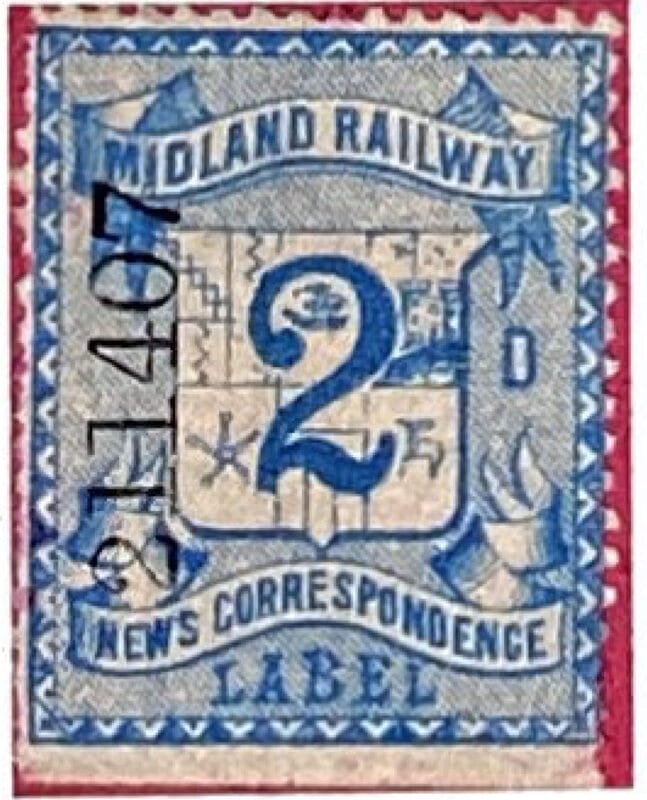
With the removal of the Newspaper Tax in 1855, there was a boom in sales, and railways carried newspapers around the country in bulk, or singly. Special Newspaper Stamps were used to show the fee had been paid, with each railway using their own designs. British Rail ended the Newspaper Service in the 1990s.
Railway Sub-Offices: 1856 to 1905
The Post Office realised that Travelling Post Offices were passing through villages on their way to a distant town, from where the mail was then brought back to those same villages byroad. . It was obviously quicker to drop mail off for these (and surrounding) villages en route, and these were designated Railway Sub-Offices, with the letters ‘RSO’ included in the bottom line of the address (much like modem postcodes). RSOs were in use from 1856 to 1905, by which time roads had vastly improved. When RSOs were abolished in 1905, the letter R was simply removed from the hand-stamp.
Railways on stamps: 1860 to date
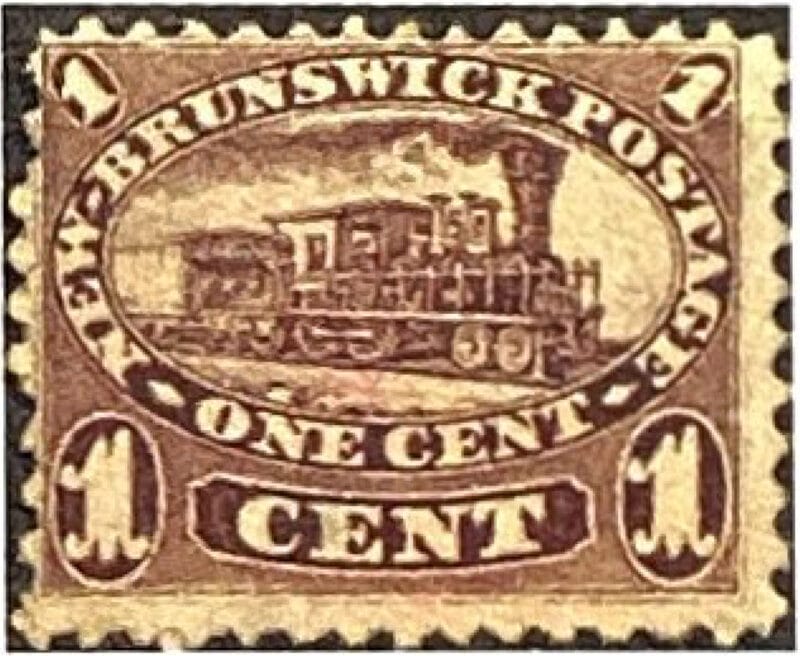
The first stamp to feature a locomotive is one from New Brunswick (now part of Canada), issued in 1860.
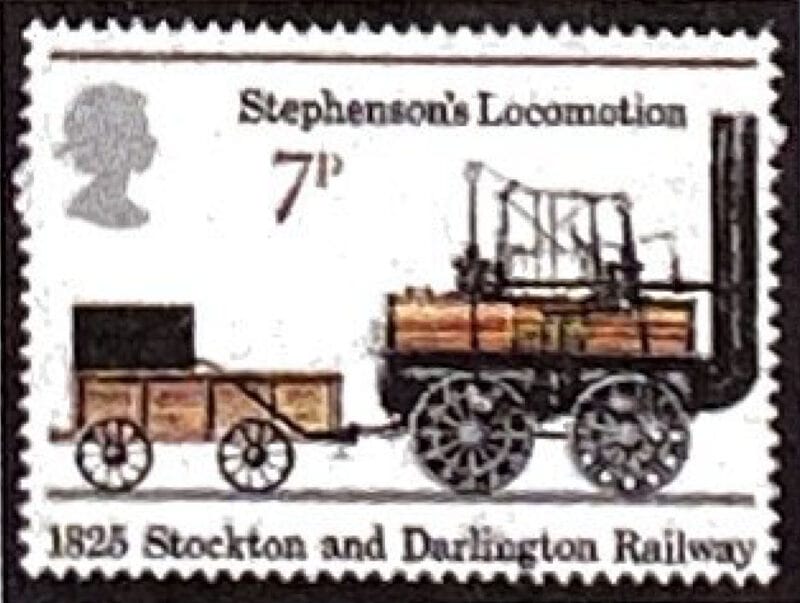
Most countries have issued stamps with a railway theme, even if there is no obvious connection between the country and the locomotive shown.
The first railway stamps issued by Royal Mail were the 1975 dated 150th Anniversary of Public Railways set.
Parcel Stamps: 1870s to 1970s
Unlike letters, the Post Office never had a monopoly on the carriage of parcels, and the railways moved into this area from the 1870s.
To show the fee had been paid, railways designed their own parcel stamps, some of which were quite elaborate. They also produced stamps for specific items, such as grain samples or farm produce.
Railway Letter Stamps: 1891 to date
By tying string around a letter, and thus disguising it as a ‘parcel’, people realised that trains could be used as an ‘express letter’ service. To stop this infringement of its monopoly, the Post Office agreed that the railways could carry a letter, within the British Isles only, and charge a fee.
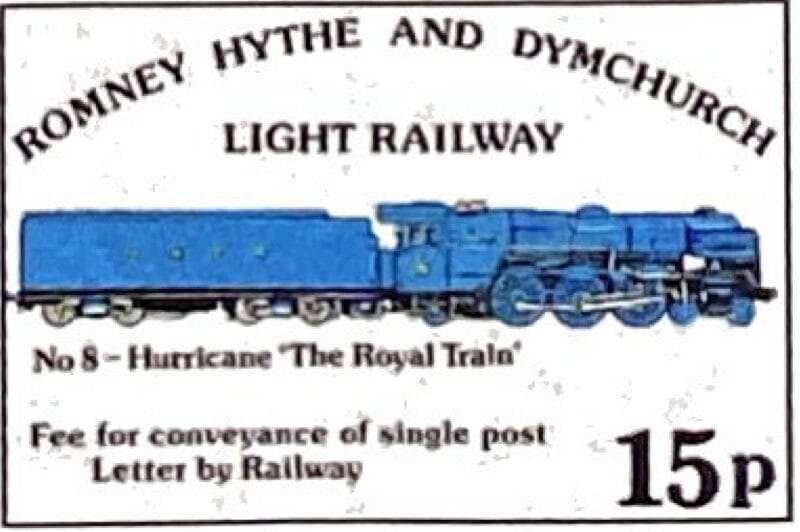
The service was introduced in 1891, and a standard design of Railway Letter Stamp was handful used their own design.
A normal postage stamp had to be affixed to the letter, and the railway fee was twice the postage. As postage rates varied, the railways overprinted their existing stock of stamps.
During the 1920s, the railways stopped using specific Letter Stamps and used parcel stamps instead. It is thought this was prompted by the numerous postage rate changes (there had been five between 1915 and 1923 alone), requiring numerous over- or re-printing of these stamps.
Following Nationalisation in 1948, British Rail continued the service until June 1984. By this time, the link with the postage rate had been broken and the BR fee had risen to £2.08.
A number of preserved (heritage) railways have also issued Letter Stamps, more for publicity than the ‘conveyance of single post letter by railway’, although very few continue to do so.
Post Office Underground Railway: 1927 to 2003
The Post Office also ran its own automatic railway in London, transferring mailbags between the major railway terminals and sorting offices. The line has been preserved and turned into the Rail-Mail tourist attraction.
Airway Letter Stamps: 1933 onwards
In 1933, the Great Western Railway launched an Air Letter Service between Cardiff and Plymouth, for which a fee was again payable.
A year later, in 1934, the Big Four railway companies (Great Western, London and North Eastern, London Midland and Scottish, Southern), together with Imperial Airways, formed Railway Air Services to carry Post Office mail in bulk as well as single letters. Their successor, British European Airways, also issued Air Letter stamps.
For further details, visit the Railway Philatelic Group website or Facebook page.
First published in RAIL magazine, June 2025
 Terry Davies
Terry Davies